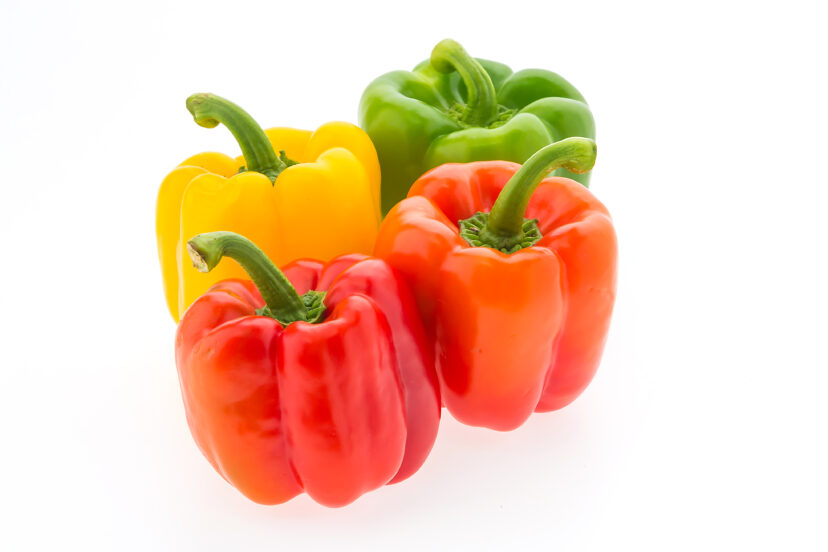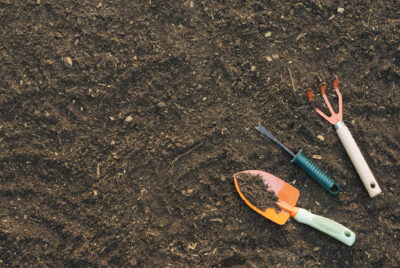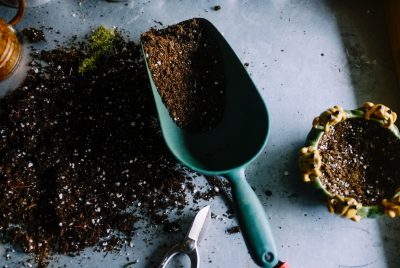Pimento Seeds: Plant your own supply of peppers!
Hey there, fellow gardening enthusiasts! Let’s embark on a journey to explore different pimento varieties, learn how to successfully plant them both indoors and outdoors, and uncover some invaluable tips and tricks that I’ve picked up along the way.
If you’re anything like me, you’re constantly on the lookout for exciting additions to your garden that can also spice up your culinary adventures. Well, let me introduce you to the wonderful world of pimento seeds. These tiny powerhouses have the potential to turn your garden into a vibrant pepper paradise, and I’m here to guide you every step of the way.
Exploring the Pimento Pepper Rainbow
Pimento peppers, also known as cherry peppers (Capsicum annuum), are like nature’s colorful palette of flavors. From the sweet and mild varieties that add a delightful crunch to your salads, to the spicier options that give your dishes that extra kick, there’s a pimento pepper for every taste bud. From the classic heart-shaped pimento that’s perfect for stuffing, to the slightly tangy variety that can elevate your pasta dishes, and to the fiery-hot peppers that’s not for the faint of heart. Each variety brings its unique flavor profile to the table, making pimento a popular choice to grow in gardens.
The Indoors vs. Outdoors Dilemma: Where to Plant Your Pimento Seeds
Now, the age-old question: should you plant your pimento seeds indoors or outdoors? Let’s break it down.
Pros and Cons of Indoor Planting
Indoor planting is like giving your pimento seeds a head start in life. You have complete control over the environment – the light, the temperature, the humidity – it’s all in your hands. Plus, you can extend the growing season, which is fantastic if your region has shorter summers. However, it does demand a bit more attention and equipment like grow lights and trays. Therefore, indoor planting is good for germinating the seeds and allowing the seedlings to grow to a certain degree before hardening them for the outdoor garden. After the growing season is over, you can also save your best producing plants for over-wintering to keep them healthy and producing for years!
Outdoors: Benefits and Considerations
Planting pimento seeds outdoors is also easy, however you are completely dependent on the elements of nature. You’re leveraging the power of the sun, the fresh air, and the soil’s natural nutrients to foster growth. Frost, pests, and unexpected weather changes can throw a wrench in your plans. But hey, that’s all part of the gardening adventure, right? Growing your peppers outdoors allow them to fully harness the benefits of the natural sunlight, and it is also a treat to see your peppers change color as they ripen or sweeten over time. You also have more space in your outdoor garden to allow your pimento plants to grow big and strong, and hence have a bountiful yield.
Planting Indoors: A Step-by-Step Guide
Let’s dive into the details of planting pimento seeds indoors in containers.
1. Choosing the Perfect Container
Think of the container as your seedling’s first home. Opt for one with drainage holes – you would not want the soil to become waterlogged and that your pimento seeds to start rotting before they have the chance to sprout. If your indoor space allows for it, opt for larger pots to give your pepper plant enough space to spread their roots to support more leaves and fruits growth.
2. Soil mixture
A well-draining, nutrient-rich seed starting mix is essential for their growth spurt. Aim for a blend that includes components such as:
- Potting Soil: (60%) High-quality potting soil forms the base of your mixture. It provides the necessary structure, drainage, and aeration.
- Coarse Sand or Perlite (20%): Adding sand or perlite to the mix enhances drainage and prevents the soil from becoming compacted. This ensures that the delicate roots have access to both water and air.
- Compost (20%): Compost is a nutrient-rich addition that promotes healthy growth. It improves soil structure, adds essential organic matter, and provides slow-release nutrients to the plants.
3. Sowing the Pimento seeds
Pimento seeds are relatively small, so it’s important not to bury them too deeply. The general rule of thumb for planting pimento seeds is to sow them at a depth of approximately:
- 1/4 inch (6 mm): Gently press the seeds into the soil at this depth. It’s like giving them a snug blanket to keep them warm as they begin to sprout.
Planting seeds too deep might result in delayed germination or the seedlings struggling to reach the surface. On the other hand, planting them too shallow can expose them to excessive drying and temperature fluctuations.
Proper spacing between pimento seeds ensures that each seedling has enough room to grow without competing for resources. Here’s how you can space your pimento seeds:
- If you’re starting your pimento seeds indoors in trays or containers (using old cardboard egg trays is also a great idea!), space the seeds about 2 to 3 inches (5 to 7.5 cm) apart. This provides enough space for each seedling to develop its initial set of leaves without overcrowding. If you are using the egg tray, sow one seed per “egg” space and when you are ready to plant the seedling into their containers, simply tear off each “egg” space and plant it directly into the soil! The cardboard will naturally decompose and create zero waste.
4. Providing Optimal Conditions
Place the container with the sown seeds in a warm and well-lit area. If the atmospheric conditions are not warm enough, you can also use a heating mat to get things rolling. Maintain consistent moisture in the soil by misting or using a gentle watering method. As the seeds germinate and seedlings develop, continue to monitor soil moisture to ensure a conducive environment for growth.
If you plan to continue growing your pimento indoors, once they sprout, give them a good dose of sunlight – 12 to 16 hours a day. If there is not enough natural sunlight, you need to provide additional grow lights for optimal light conditions.
5. Transplanting seedlings from indoors to outdoors
1. Harden Off Gradually
Harden off your pimento seedlings by gradually exposing them to outdoor conditions. This process helps them acclimate to the differences in temperature, sunlight, wind, and humidity. Follow these steps:
- Start by placing the seedlings outdoors in a sheltered, shaded area for a few hours a day. Choose a mild day to begin.
- Gradually increase the time they spend outdoors over the course of 7 to 10 days.
- Slowly expose them to more direct sunlight and wind as the days progress.
2. Choose the Right Timing
Plan to transplant your pimento seedlings outdoors when the risk of frost has passed and the weather is consistently warm. Timing varies depending on your location and local climate. Consult your local online resources for recommended transplanting dates in your region. Some local garden shops also sell seed sowing calendar to guide you on the exact months to sow, transplant and harvest different produce. Be sure to check those out!
3. Prepare the Planting Site
Before transplanting, prepare the outdoor planting site:
- Choose a sunny location with well-draining soil.
- Amend the soil with compost to improve fertility and structure.
- Space the planting holes according to the mature size of the pimento variety you’re growing (typically 18 to 24 inches apart).
4. Transplanting Process
Transplanting requires care to minimize stress on the seedlings:
- Water the seedlings thoroughly a day or two before transplanting to ensure they’re well-hydrated.
- Gently remove the seedlings from their containers, holding them by the leaves to avoid damaging the delicate stems.
- Dig holes in the prepared planting site that are slightly larger than the root ball of each seedling.
- Place the seedlings in the holes, ensuring they’re at the same depth they were in their containers.
- Fill in the holes with soil and press gently around the base of each plant to secure them.
5. Watering After Transplanting:
After transplanting, water the seedlings deeply to help settle the soil around their roots. Continue to water regularly, keeping the soil consistently moist but not waterlogged. As the seedlings establish themselves, they’ll develop stronger root systems to access moisture from deeper in the soil. You can also apply mulch around the soil to conserve moisture, which is especially helpful in the hot summer months.
Planting Outdoors: Embrace the Earthy Connection
Here’s a step-by-step guide to help you successfully plant and nurture your pimento seeds in the great outdoors. Planting outdoor is not different from planting indoors. I strongly recommend that you start germinating your seeds indoor first and then transplant them outdoors to their final locations. Do not forget to slowly harden off the seedlings, so that they do not experience cold shock.
1. Choose the Perfect Spot:
Selecting the right location for your pimento is crucial. Pimento peppers thrive in full sunlight, so choose a spot that receives at least 6 to 8 hours of direct sunlight each day. Ensure that the area has well-draining soil to prevent waterlogging, as pimentos don’t like to have “wet feet.”
2. Prepare the Soil:
Properly preparing the soil sets the foundation for healthy pimento growth. Follow these steps:
- Clear the area of weeds, rocks, and debris.
- Loosen the soil to a depth of about 8 to 10 inches (20 to 25 cm).
- Incorporate compost or well-rotted manure to enrich the soil with nutrients.
3. Transplanting Seedlings:
As the seedlings grow larger and develop a few sets of true leaves, they’ll need more space. Transplant them into their final growing locations, whether it’s a garden bed or larger containers. Space the transplants about 18 to 24 inches (45 to 60 cm) apart to give each plant ample room to grow.
4. Provide Support:
As your pimento plants grow and produce peppers, they may benefit from some support. Stake or cage your plants to prevent the branches from drooping under the weight of the fruit. This also helps improve air circulation and reduces the risk of diseases.
5. Care and Maintenance:
Continue to care for your pimento plants by:
- Watering consistently to keep the soil evenly moist.
- Monitoring for pests and diseases and taking prompt action if necessary.
- Providing a balanced fertilizer to nourish the plants as they develop.
By following these steps and giving your pimento seeds the care they need, you’ll be on your way to enjoying a bountiful harvest of flavorful peppers. Planting pimento seeds outdoors allows you to connect with nature and witness the magic of growth as your garden transforms into a vibrant pepper haven.
Pest and Disease Control: Shielding Your Plants from Troublemakers
Pests and diseases are like uninvited guests crashing your party. Here’s how to keep them at bay:
Aphids, Beware!
Think of aphids as the bullies of the garden. If you spot them, blast them off with water – it’s like giving them a taste of their own medicine. There are also natural predators of aphids or practice companion planting to lure the pest away from your vegetables. Check out this post to learn about natural pest controls.
Fungal Foes
Fungal diseases are like a pesky cold that just won’t go away. Provide good air circulation and avoid overwatering – it’s like making sure your plants don’t catch a chill.
Harvesting Your Hard Work
The moment you’ve been waiting for – harvesting your fruits of labor.
Color is Key
Imagine your pimento peppers as artists – they change color as they mature. Wait until they reach their full, vibrant hue before picking them.
Gentle Twist
Harvesting is like picking ripe fruit from a tree. Gently twist the pepper – if it comes off easily, it’s ready for your kitchen adventures.
Cooking with Pimentos
With your harvest in hand, it’s like having a treasure trove of flavors at your disposal. Get ready to unleash your culinary creativity!
Stuffed Goodness
Think of pimentos as nature’s tiny bowls waiting to be filled. Stuff them with cheese, meats, or grains for a burst of flavor in every bite.
Pickled Perfection
Pickling pimentos is like preserving a memory. Turn them into tangy delights that elevate sandwiches, salads, and more.
Spicy Roasting
Roasting pimentos is like discovering hidden depths. The heat intensifies, and the flavors deepen – perfect for salsas, sauces, and spreads.
Storing the Bounty: Like Saving Summer in a Jar
Storing your pimentos is like capturing a piece of summer to enjoy later. Here’s how to make sure they stay fresh and delicious:
Freezing for Future Feasts
Freezing your pimentos can ensure that your pimentos retain all their flavors. Dice or roast your pimentos, then freeze them for a summer feast in the winter months.
Oil Immersion
Submerge them in olive oil, and you’ve got a tasty, flavorful concoction ready for your recipes.
Troubleshooting: Overcoming Challenges
Gardening is like a dance – sometimes you stumble, but you find your rhythm again. Here are some common issues and how to address them:
Yellowing Leaves? It’s Not a Good Sign
Yellow leaves are like your plant’s SOS signal. It could be due to overwatering or nutrient deficiencies. Adjust your watering and feed them some plant food.
Pests Crashing the Party?
Pests are like gatecrashers at your garden party. Introduce natural predators like ladybugs or use neem oil against the pest.
Final Thoughts: From Seed to Colourful Delights
And there you have it – your journey from pimento seeds to flavorful peppers is complete. It’s like watching your garden flourish and thrive, and I’m thrilled to have been your gardening buddy on this adventure. Remember, every step you take in your garden is a step towards creating your own haven of flavors. So, grab those pimento seeds, roll up your sleeves, and let’s plant the seeds of joy and flavor together!
FAQs: Digging Deeper into Pimento Growing
- Can I grow pimentos in pots on my balcony? Absolutely! Pimentos thrive in containers as long as they get enough sunlight and care.
- How often should I water my pimento plants? Check the soil – if it feels dry about an inch deep, it’s time to water. But remember, moderation is key.
- Are pimentos prone to any specific diseases? They can be susceptible to fungal diseases, especially if not properly spaced and ventilated. Keep an eye out and take preventive measures.
- Can I use store-bought peppers to grow my own pimentos? While it’s possible, using seeds from store-bought peppers might not yield the best results. Opt for quality pimento seeds from a reliable source for better chances of success.
- What’s the best way to store my harvested pimentos? If you plan to use them within a few days, store them in the refrigerator. For longer storage, consider freezing or pickling them.
So there you have it, fellow garden enthusiasts – your guide to nurturing and harvesting your very own pimento peppers. Get ready to infuse your dishes with a burst of flavor and color straight from your garden. Happy planting!





